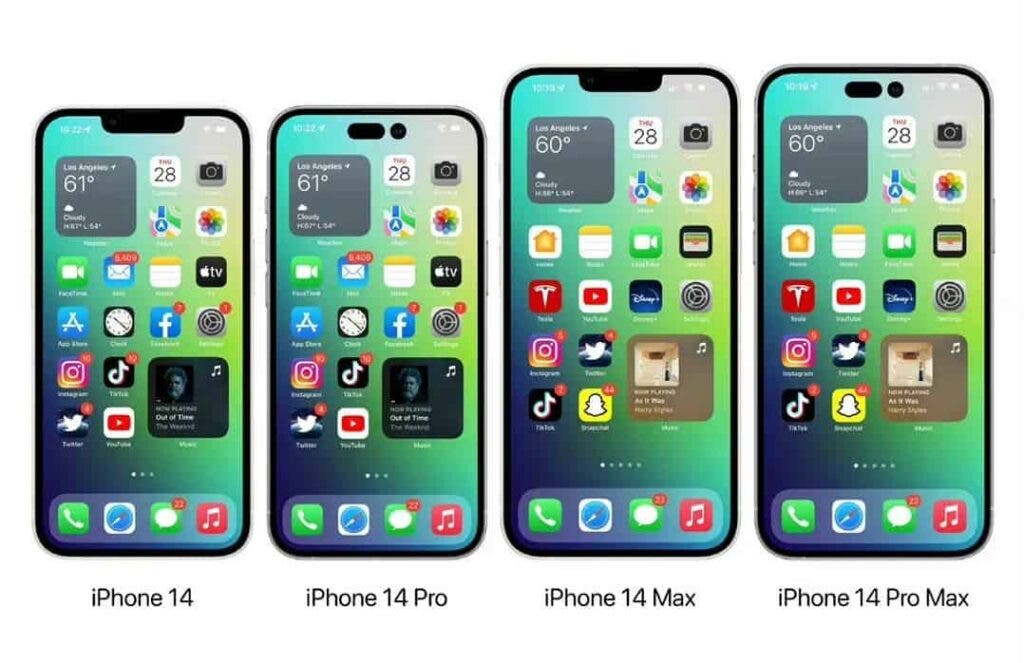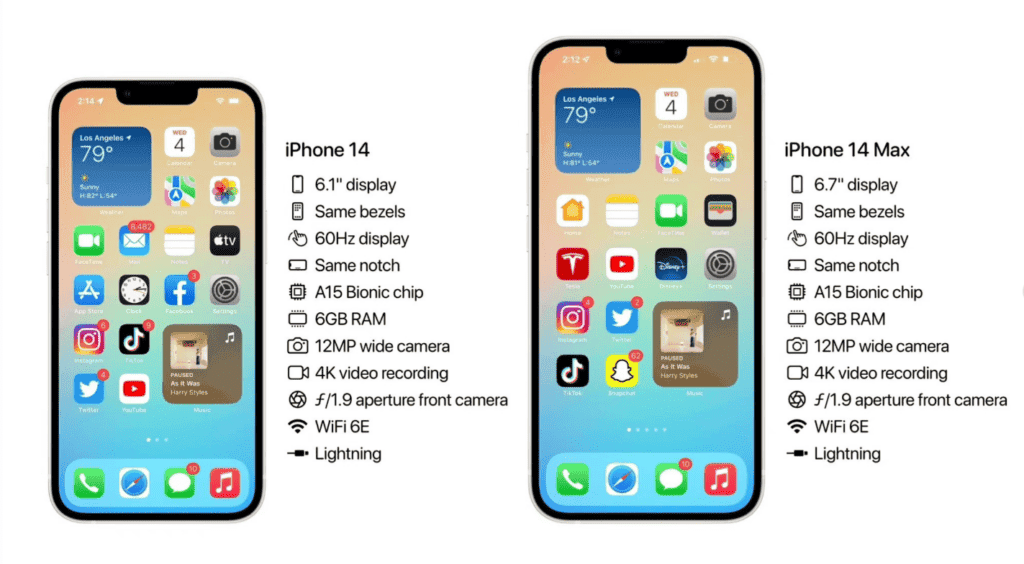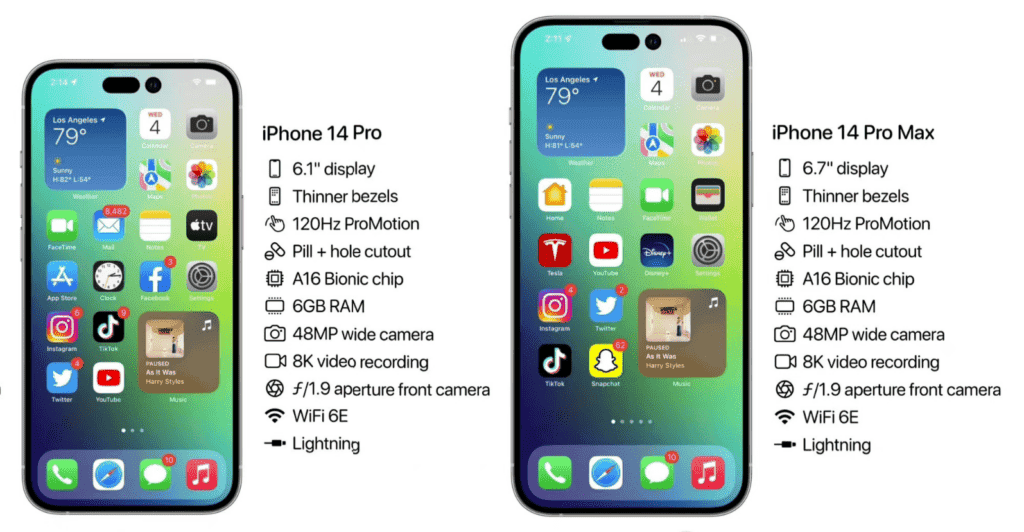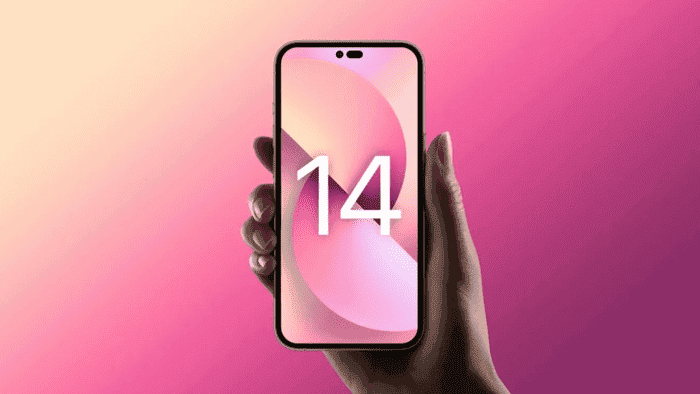Judging from various recent supply chain rumours, although the stocking of iPhone 14 has been affected by issues such as the pandemic, it will not interfere with Apple’s normal rhythm. The new phone will still arrive as scheduled on a Tuesday in September. According to the latest report from JPMorgan Chase, the iPhone 14 series may start mass production and stocking as early as early August, of which the two small-sized models of the iPhone 14 and iPhone 14 Pro will be the first to start production.

However, it is important to note that last year’s iPhone 13 series hit mass production as early as July. From this point of view, the stocking of the iPhone 14 series may be less than last year. Users who want to grab the first release may need be more proactive to get a unit. According to industry authorities, the iPhone 14 series has now finalized four products, namely iPhone 14, iPhone 14 Max, iPhone 14 Pro and iPhone 14 Pro Max.

The two standard versions, iPhone 14 and iPhone 14 Max will inherit the design of the previous generation. Of these, the latter is a new model and will use the same 6.7-inch screen as the Pro Max version. However, the other hardware of this smartphone will remain the same.
As for the Apple iPhone 14 Pro, there are major changes. The most notable thing is that the screen will abandon notch design for the first time, and use the “exclamation mark”. The “exclamation mark” design is a pin-point punch hole as well as a pill-shape punch-hole.

iPhone 14 series speculated parameters
The specific parameters of the iPhone 14 series are as follows:
- iPhone 14: 6.1-inch notch screen, 60Hz refresh rate, A15 processor, 6GB RAM, 12MP main camera;
- iPhone 14 Max: 6.7-inch notch screen, 60Hz refresh rate, A15 processor, 6GB RAM, 12MP main camera;
- Apple iPhone 14 Pro: 6.1-inch “exclamation mark” punch-hole screen, 120Hz LTPO adaptive refresh rate, ultra-narrow bezel, 6GB RAM, A16 processor, 48MP main camera, support for 8K video shooting;
- iPhone 14 Pro Max: 6.7-inch “exclamation point” punch-hole screen, 120Hz LTPO adaptive refresh rate, ultra-narrow bezel, 6GB RAM, A16 processor, 48MP main camera, support 8K video shooting.
New iOS 16 features are here – exclusive to the iPhone 14 Pro series
According to reports, some of these features will be exclusive to the iPhone 14 Pro series. The always-on screen function that many Apple fans expect is also different on the iPhone. Specifically, this is an exclusive function of the iPhone 14 Pro series. According to the latest news, Apple’s launch of iOS 16 may include support for always-on display. This is a feature that may appear in the iPhone 14 Pro and iPhone 14 Pro Max later in 2022.
The fall update to the iPhone 14 lineup could include a change in display technology. The iPhone 14 Pro and iPhone 14 Pro Max are rumoured to offer a low 1Hz refresh rate. In order to implement such a feature, it seems that Apple will lay the groundwork for this in iOS 16.
According to sources who told Mark Gurman of Bloomberg’s “Power On” newsletter, iOS 16 will include support for an “always-on lock screen”. He added that this would “allow the iPhone to dramatically reduce frame rates while the screen is locked and display useful information at all times,” similar to some Apple Watch models.
Why iPhone 13 abandoned the always on display feature
Gurman claims that this feature is “what Apple originally planned to use in last year’s iPhone 13” because Apple once added low-temperature polycrystalline oxide (LPTO) display panels to the iPhone 13 Pro series, and the technology has the potential to be used. It offers a partially always-on display, but the ProMotion support only goes as far as 120Hz. This makes it difficult to ensure battery consumption is kept low. This is probably the reason why Apple did not eventually release the feature with the iPhone 13 series.
Apple plans to make major adjustments and enhancements to the lock screen interface in iOS 16. It will include support for wallpapers for widgets, support for always-on mode, and more. For iPadOS 16, the source claims that the system will make important adjustments to windowing and multitasking functions. There may be a window function that can automatically move and resize. Furthermore, the Apple tvOS 16 will get more smart home-related features.
Apple iPhone 14 series will come with more power
Apple has been ahead of Android brands processors for some years now. This year’s iPhone 14 series will again come with more power. Although the iPhone 14 and iPhone 14 Max will use last year’s A15 Bionic, this chip is still ahead of 2022 Android flagship processors. For the iPhone 14 Pro and 14 Pro Max, they will come with the new A16 Bionic processor. Although this chip still uses TSMC 5nm process like the previous generation, it comes with some improvement.
Since the iPhone 12 series, Apple has been using 5nm process chips. However, these chips comes with some degree of improvements from generation to generation. Without new process upgrades, Apple’s processors cannot be significantly change in architecture. This year’s A16 performance improvement will not change significantly. Apple can only optimize some specifications. For example, A16 will support LPDDR5 memory this year while the memory capacity will upgrade from 4GB to 6GB.
Apple has been on 5nm for three years
For three consecutive years, Apple has been squeezing the 5nm process. However, this is not entirely Apple’s fault. The main reason is related to the process progress of the foundry, TSMC. TSMC’s advanced technology also slowed down and the 3nm process will not be ready this year. Some people expect that the A17 Bionic processor will use the 3nm process next year. Nevertheless, there is no guarantee that the A17 chip will use this new process. The 3nm production capacity will not necessarily ensure Apple’s needs next year. There is a possibility that the A17 might use an improved 4nm process .
On the other hand, Apple may also see that even if it uses the 5nm process for three years, there is no Android flagship processor that beats it. The likes of the Snapdragon 870 has been around for three years, yet it is still appearing in 2022 devices. In the past few years, the performance of mobile phone processors is indescribable.





